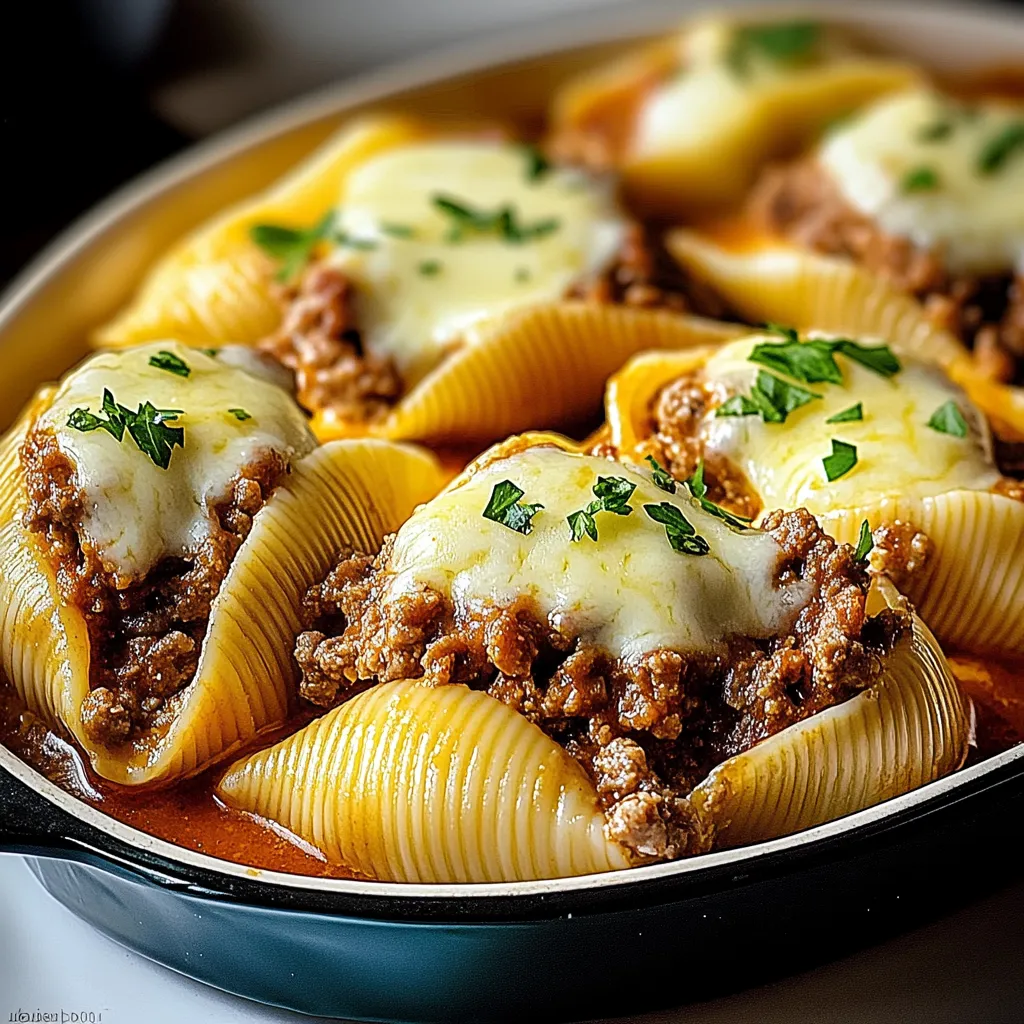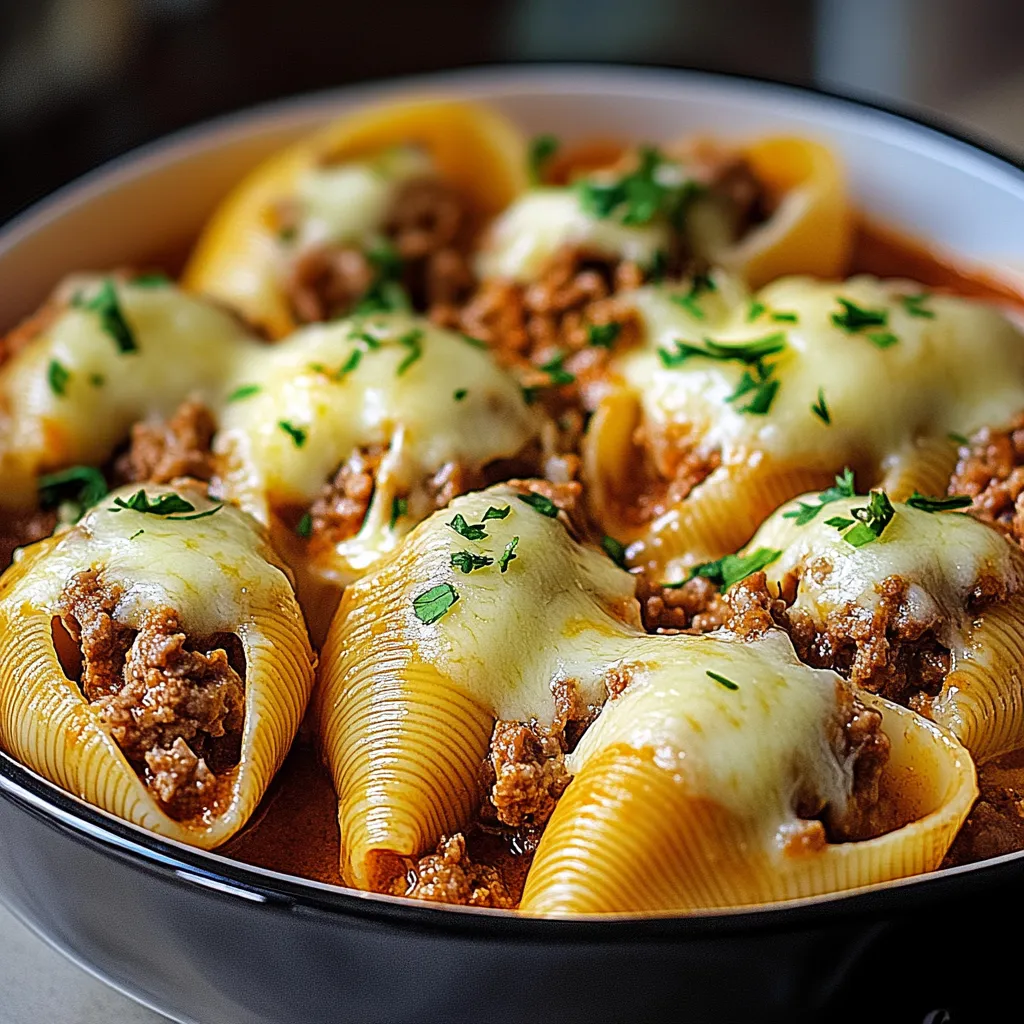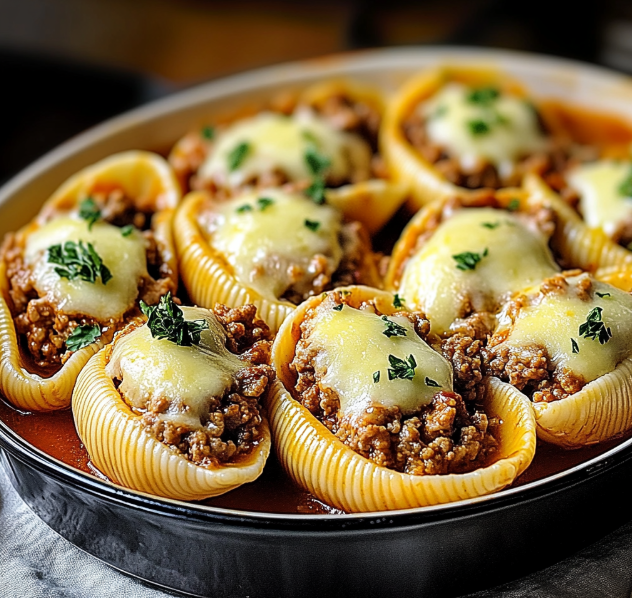 Pin it
Pin it
When cheese-packed pasta shells simmer in tomato sauce, your kitchen suddenly feels like an Italian grandma's haven. I've turned these Velvety Beef and Ricotta Stuffed Shells into my favorite way to show love through cooking. After tweaking this dish through many family meals, I've found the magic lies in balancing smooth ricotta, flavorful beef, and that irresistible layer of melted mozzarella on top.
I cooked this for my daughter's teammates last week, and even the fussiest kids wanted more. There's something magical about breaking that crispy cheese crust to find the smooth filling underneath that makes everyone grin.
Key Ingredients and Smart Selection Advice
- Pasta Shells: Go for large, firm shells - they need to be tough enough for stuffing.
- Ricotta: Pick whole milk ricotta for ultimate creaminess. I let mine sit in cheesecloth for half an hour first.
- Ground Beef: An 80/20 mix gives the tastiest results, though 90/10 works if you want something lighter.
- Pecorino Romano: This cheese adds a bold, salty kick that's more interesting than Parmesan alone.
- Tomato Sauce: Don't skimp here - I always grab San Marzano tomatoes for their naturally sweet taste.
 Pin it
Pin it
Detailed Shell Creation Process
- Shell Preparation (15 minutes):
- Cook your shells just until they're firm to bite - they'll finish cooking in the oven. Put a little olive oil in the water to stop them sticking. Place cooked shells on a tray to cool separately.
- Filling Creation (20 minutes):
- Cook beef until you see a nice brown crust. Let it cool a bit before mixing with cheeses. Stir filling gently to keep it airy. Don't hold back on seasoning - the pasta will tone down the flavors.
- Assembly Process (25 minutes):
- Put sauce on the bottom to stop sticking. Fill shells using a spoon or piping bag. Place them carefully - they should be close but not squished together.
My first try with these shells was pretty messy, with filling scattered everywhere except inside the pasta. Now I've learned that taking your time and letting things cool properly makes all the difference.
Preparing In Advance
These stuffed shells work great for planning ahead. I often put everything together the evening before, wrap the dish well, and stick it in the fridge. Next day, I just bake it, adding about 10-15 minutes to the cooking time. The flavors actually get even better overnight.
 Pin it
Pin it
Fixing Common Problems
If your shells crack during filling, they might be too soft or still hot. I've found it's better to cook them slightly less and cool them completely before handling. Also, if your filling seems runny, add a bit more Pecorino Romano - it helps everything stick together nicely.
Making Shells Your Way
Throughout the years, I've tried different versions:
- Mix in spinach with the filling for a healthier twist
- Combine Italian sausage with the beef for extra flavor
- Add fresh herbs like basil and oregano to brighten things up
Whenever I make these shells, I think about those Sunday meals at my friend's Italian grandma's house. There's something really comforting about carefully filling each shell, arranging them in rows, and watching them change in the oven. Whether you're cooking for your family or hosting a special event, these stuffed shells always bring folks together around the table.
Just remember, great stuffed shells can't be rushed. Every part - from cooking the pasta to spreading the sauce - plays a role in making the dish amazing. And when you pull that bubbling, golden-topped dish from the oven, you'll see it was worth every second spent.
Frequently Asked Questions
- → What’s the best way to fill the pasta shells?
Use a spoon or a piping bag for clean and easy filling. Make sure the pasta is completely cool to avoid tearing.
- → Can I make this dish vegetarian?
Absolutely. Replace the ground beef with sautéed mushrooms or spinach for a meat-free version.
- → Should I drain the ricotta before using it?
Yes, draining ricotta (using cheesecloth or paper towels) ensures the filling is rich and thick rather than watery.
- → How long can I refrigerate leftovers?
Store in an airtight container for up to 3-4 days. Reheat in the oven or microwave for best results.
- → What other cheeses can I use?
Feel free to substitute mozzarella with provolone or Pecorino with Parmesan for different flavor profiles.
